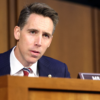A Down Payment on Nationalization
- Trillion Dollars Down: In less than two months, the President has already budgeted nearly $1 TRILLION on his health care proposals—SCHIP, the stimulus, and now the budget.
- A Bottomless Well: President Obama’s FY 10 budget proposal offers a $634 billion “down payment” on health care reform. The only truth to this number is that it will continue to grow, and they openly admit it in the President’s budget proposal: “The budget calls for an effort beyond this down payment, to put the nation on a path to health insurance coverage for all Americans. However, additional funding will be needed.”
- Squeezing Water from a Stone: The President’s budget depends on typical liberal tax hikes while rearranging the deck chairs for Medicare and Medicaid to produce “savings.” There is only so much you can tax or squeeze before you hit rock bottom.
The Daily Signal depends on the support of readers like you. Donate now
Fast-Tracking a Flawed Process
- Taking Your Own Pulse: A bipartisan health care summit may be nice window dressing, but the test of real bipartisanship is found in policy, not in photo ops. So far on health care, the President’s promise for bipartisanship is more hope than change. Since January, President Obama has signed into law over $200 billion spending to advance his health care agenda—$136 billion alone on in the stimulus—with little, if any, notion of bipartisanship.
- Consolidated Power: To achieve his goals, President Obama’s health plan will need to depend on a massive top-down infrastructure to control health care dollars and decisions. Instead of empowering patients and doctors, Washington will be in charge.
- Loss of Private Coverage: At a time when Americans are worried about losing their health care, the promise of a new government health plan will only undermine the private health insurance that million of Americans depend on today. Not only do government programs cost more than they project, but they also promise more than they deliver.
Real Health Care Solutions for America
- Consumer Choice: Give Americans the consumer-choice system available to Members of Congress as a true model, not as a façade for government-run health care.
- Take Bold Steps, Give States the Power: Allow states to experiment with better ways of reaching the nation’s health coverage goals rather than imposing a national plan on states and families.
- Be Bipartisan: In such areas as the tax treatment of health care, federal-state cooperation, and other critical pieces of health reform, there are thoughtful and well-developed approaches. Build on these important developments; do not ignore them.































